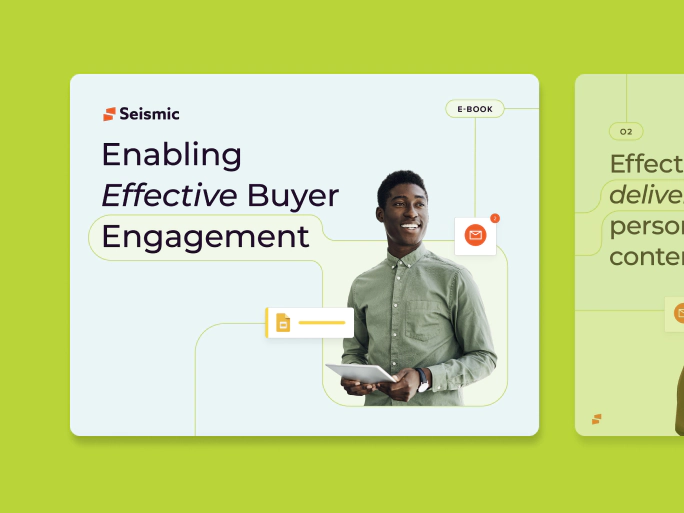What is sales engagement?
Sales engagement is the communication that happens between sales reps and buyers. By improving these touchpoints, teams can increase conversions, build relationships and ultimately close more deals.
Sales engagement’s meaning has changed in recent years with the rise of virtual selling and sales engagement platforms that support workflows and processes. Sales engagement and the technology that powers it have become closely interconnected, leading to more personalised and automated customer interactions that drive business growth and success.
The modern sales engagement process
The process has evolved over the years, with many sales engagement activities relying on digital channels to support the sales cycle. Today, it’s common for buyers to do extensive research before speaking to a rep – by some accounts, as much as 27 information-gathering interactions. That’s why digital channels, like social media, email and online messaging, are critical components of the sales engagement toolkit.
While phone, Zoom and in-person meetings are still important at later stages in the buyer’s journey, sellers should leverage digital channels to build rapport with prospects during earlier touchpoints.
To engage effectively, sales teams must have a strong digital presence and be equipped to share personalised content and messaging through the right channels. The good news is, sales engagement technology and enablement can support reps in delivering targeted content to prospects through the right channels. They also help reps prepare for pivotal selling moments.
Did you know?
Buyers go through as much as 27 info-gathering interactions before speaking to a rep?
The connection between sales engagement and enablement
Sales engagement is a critical component of any successful sales strategy, but it requires more than just enthusiasm and persistence to be effective. That’s why organisations need both sales engagement and sales enablement to thrive.
The sales engagement process is about optimising interactions between sales reps and prospects. Sales enablement provides reps with the tools, training and resources they need to be effective in those interactions. It also helps sellers better understand their audience, anticipate their needs and provide value at every stage of the buying journey.
For example, sales engagement might focus on tracking and improving email engagement with leads, while sales enablement provides the messaging reps use in their communications. By prioritising these approaches equally, organisations can drive seller success, deliver a better customer experience and achieve their revenue goals.
What is a sales engagement platform?
Sales engagement platforms are tools that help sales teams automate and improve engagement with prospects. Sales engagement software often includes features like email tracking, call recording and social media integrations. These tools often integrate with your CRM to connect the dots on digital touchpoints and build a holistic picture of a buyer’s behaviour.
Ultimately, sales engagement platforms are designed to improve the quality of interactions with prospects. They are becoming more common, with Gartner finding that 87% of sales teams have adopted a sales engagement platform.
Enabling Effective Buyer Engagement,

Why is a sales engagement strategy important?
Today’s buyers expect their interactions with reps to be useful, informative and convenient – on the platform of their choice. A strong sales engagement strategy allows reps to meet these expectations and directly translate engagement into business. Buyers who are fully engaged in the sales process account for a 23% increase in revenue.
Because sales engagement touches everything from email marketing to social media planning, it’s crucial for companies to adopt a comprehensive strategy that prioritises clear goals and tracks analytics for improvement over time.
How to improve sales engagement
Great sellers know that strong selling requires more than just a pitch – it’s about understanding your audience and building genuine connections. But without the right tools and knowledge, it’s challenging to properly engage with buyers and effectively move them through the sales cycle.
That’s where sales enablement comes in; good enablement helps sellers acquire knowledge and skills that lead to meaningful interactions with buyers and provides the resources sellers need to make personalised connections. Maximising your enablement efforts to improve engagement at your organisation does not have to be complicated. To get started, here are a few of the most impactful enablement strategies to implement in your org:
1
Align marketing and sales processes
2
Store, manage and track content
3
3. Prioritise just-in-time enablement
4
4. Provide ongoing training and coaching
5
5. Connect sales tools
Never stop growing.
Enablement + engagement = seller effectiveness
Enablement is key to strong engagement, and sales engagement tools are how organisations can take action with buyers quickly and easily. By building enablement and engagement strategies in tandem, organisations will drive engagement and achieve more impactful results.
The Seismic Enablement CloudTM empowers sellers with the skills, content, tools and insights they need to drive engagement and grow the business. Seismic offers sales content management, learning and coaching functionality that integrates with sales engagement tools for optimal sales effectiveness. Join the 2,200+ organisations that use Seismic to build successful sales enablement strategies and improve win rates by 35%. Get a demo here.



